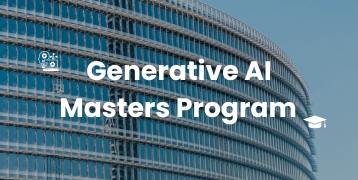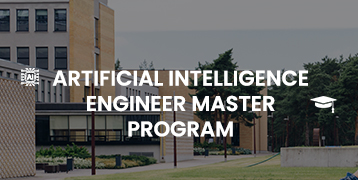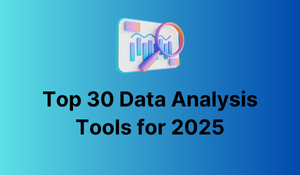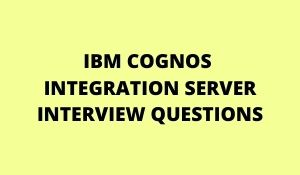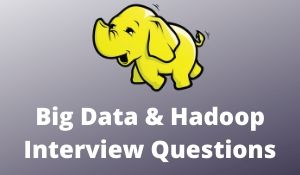
What is Big Data?
Big information could be a term that describes the large and complicated information (i.e. Structured, Semi-structured, and Unstructured) that becomes tedious to capture, store, process, retrieve,e and analyze exploitation of ancient information and code techniques.
What are the five V’s (characteristics) of massive Data?
Big information has 5 main characteristics:
- Volume – Volume describes the number of information generated by organizations or people.
- speed – speed describes the frequency at which information is generated, captured, and shared.
- selection – selection refers to differing types of information i.e. structured, semi-structured, and unstructured information that is text, video, audio, sensing element information, log files, etc.
- truthfulness -Veracity refers to the messiness or trait of the info.
- price – price refers to our ability to flip our information into price.
What is Hadoop?
Hadoop is a code framework or platform that permits for distributed storage and distributed process of terribly giant information sets on pc clusters.
Hadoop = HDFS + Map cut back

What are the options of Hadoop?
Fault Tolerance – By default three replicas of every block are kept across the cluster in Hadoop and it may be modified conjointly as necessary. therefore if any node goes down, information on it node may be recovered from alternative nodes simply. Failures of nodes or tasks are recovered mechanically by the framework.
Reliability – as a result of the replication of information within the cluster, information is faithfully kept on the cluster of machines despite machine failures. If your machine goes down, then conjointly your information is kept faithfully.
High handiness – High handiness (HA) refers to the aptitude of a Hadoop system to continue functioning, no matter multiple system failures. If a machine or hardware crashes, then information is accessed from another path.
Scalability – Hadoop could be an extremely climbable storage platform as a result it will store and distribute giant information sets across many cheap servers that operate in parallel. Hadoop is extremely climbable within the means new hardware may be simply additional to the nodes. It conjointly provides horizontal quantifiability which implies new nodes may be additional on the fly with no period.

Economic – Hadoop isn’t dear because it runs on a cluster of artifact hardware. we tend to don’t would like any specialized machine for it. Hadoop provides Brobdingnagian price savings conjointly because it is extremely simple to feature additional nodes on the fly here. Therefore if demand increases, you’ll be able to increase nodes additionally with no period and while not requiring a lot of pre-planning.
Data neighborhood – Hadoop works on the information neighborhood principle that states move computation to information rather than information to computation. once the shopper submits the algorithmic rule, this algorithmic rule is affected to information within the cluster instead of delivering information to the situation wherever The associate in the Nursing algorithmic rule is submitted and then processes it.
Flexibility – Hadoop manages information whether or not structured, semi-structured, unstructured, encoded or formatted, or the other kind of information.
What is the essential distinction between ancient RDBMS and Hadoop?
Hadoop Core does not support period processing (OLTP), it’s designed to support large-scale instruction execution workloads (OLAP), whereas RDBMS are designed for OLTP (Real-time information processing), not instruction execution.
Hadoop is associated in Nursing approach to storing a large quantity of information within the distributed filing system and method it, whereas RDBMS is employed for transactional systems to report and archive the info.
Hadoop framework works all right with structured and unstructured information. This conjointly supports a range of information formats in real-time like XML, JSON, and text-based file formats. However, RDBMS solely works with higher once the Associate in Nursing entity-relationship model (ER model) is outlined utterly and so, the information schema or structure will grow and unmanaged otherwise. i.e. Associate in Nursing RDBMS works well with structured information.
What is the distinction between Hadoop 1 and Hadoop 2?
Hadoop 1.x
Hadoop 2.x
In Hadoop one.x, “Namenode” has a Single-Point-of-Failure (SPOF) due to a single Namenode.
In Hadoop a pair of.x, there are Active and Passive (standby) “Namenodes”. If the active Namenode fails, the passive “Namenode” takes charge. due to this High handiness may be achieved.
Supports MapReduce (MR) process model solely.
Allows operating in Mr additionally as alternative distributed computing models like Spark, HBase coprocessors, etc.
MR will each process and cluster resource management.
YARN (Yet Another Resource Negotiator) will cluster resource management and the process is completed exploitation, different process models.
A single Namenode to manage the complete namespace.
Multiple Namenode servers manage multiple namespaces.
What are the core parts of Hadoop?
The core parts of Hadoop are HDFS and MapReduce.
HDFS {is basically|is essential |is giantly} accustomed to storing large datasets.
MapReduce is employed to method such giant datasets.
How does one outline “block” in HDFS? What’s the block size in Hadoop 1 and Hadoop 2? Will or not it’s changed?
A “block” is the minimum quantity of information that will be browsed or written. it’s a storage entity of HDFS. Files in HDFS are weakened into block-sized chunks, that are kept as freelance units.
In Hadoop, the default block size is 64MB
In Hadoop a pair of, the default block size is 128MB
Yes, the block size may be modified. The dfs. block. size parameter may be employed in hdfs-site.xml file to line the scale of a block in an exceedingly Hadoop surroundings.
What is a Block Scanner in HDFS?
Block scanner maintains the integrity of the info blocks. It runs sporadically on each Datanode to verify whether or not the info blocks kept are correct or not.
Steps:-
Datanode reports to Namenode.
Namenode schedules the creation of recent replicas exploiting the great replicas.
Once the replication issue (uncorrupted replicas) reaches the specified level, deletion of corrupted blocks takes place.
What is a Daemon?
Daemon may be a method or service that runs within the background. In general, we tend to use this word in OS settings. The equivalent of Daemon in Windows is “services”.
What are the modes Hadoop will run in?
Hadoop will run in 3 different modes-
Local/Standalone Mode
- This is often the only method mode of Hadoop, which is the default mode, whereby no daemons are running.
- This mode is beneficial for testing and debugging.
Pseudo Distributed Mode
- This mode may be a simulation of a distributed mode however on a single machine. This suggests that all the daemons of Hadoop can run as a separate method.
- This model is beneficial for development.
Fully Distributed Mode
- This mode needs 2 or a lot of systems as a cluster.
- Name Node, knowledge Node, and every one of the processes run on different machines within the cluster.
iii. This mode is beneficial for the assembly setting.
Tell US however massive knowledge and Hadoop are associated with one another
Massive knowledge and Hadoop are nearly synonymous terms. With the increase of huge knowledge, Hadoop, a framework that focuses on massive knowledge operations conjointly became common. The framework may be employed by professionals to research massive knowledge and facilitate businesses to create choices.

However, is massive knowledge analysis useful in increasing business revenue?
Massive knowledge analysis has become vital for the companies. It helps businesses to differentiate themselves from others and increase revenue. Through prophetical analytics, massive knowledge analytics provides businesses with customized recommendations and suggestions. Also, massive knowledge analytics permits businesses to launch new merchandise looking at client wants and preferences. These factors build businesses that earn a lot of revenue, and therefore firms are exploiting massive knowledge analytics. Firms could encounter an increase of 5-20% in revenue by implementing big knowledge analytics. Some common firms that are exploiting massive knowledge analytics to extend their revenue are – Walmart, LinkedIn, Facebook, Twitter, Bank of America, etc.
Make a case for the steps to be followed to deploy a giant knowledge resolution.
Followings are the 3 steps that are followed to deploy a giant knowledge resolution –
Knowledge activity
The first step for deploying a giant knowledge resolution is the knowledge activity i.e. extraction of information from numerous sources. the information supply could also be a CRM like Salesforce, an Enterprise Resource designing System like SAP, an RDBMS like MySQL, or other log files, documents, social media feeds, etc. The information may be eaten either through batch jobs or period streaming. The extracted knowledge is then kept in HDFS.
Big knowledge Interview queries and Answers
Steps of deploying massive knowledge resolution
Knowledge Storage
After the knowledge activity, the succeeding step is to store the extracted knowledge. the information either be kept in HDFS or NoSQL information (i.e. HBase). The HDFS storage works well for consecutive access whereas HBase for random read/write access.
Processing
The final step in deploying a giant knowledge resolution is the processing. the information is processed through one in every of the process frameworks like Spark, MapReduce, Pig, etc.
Related Courses:
| Course Name | Enroll Now |
|---|---|
| Big Data Architect Masters Program | Enroll Now |
| SQL Server Training | Enroll Now |
| NoSQL Training | Enroll Now |
| BIG DATA HADOOP TRAINING | Enroll Now |
| MySQL DBA Training | Enroll Now |

